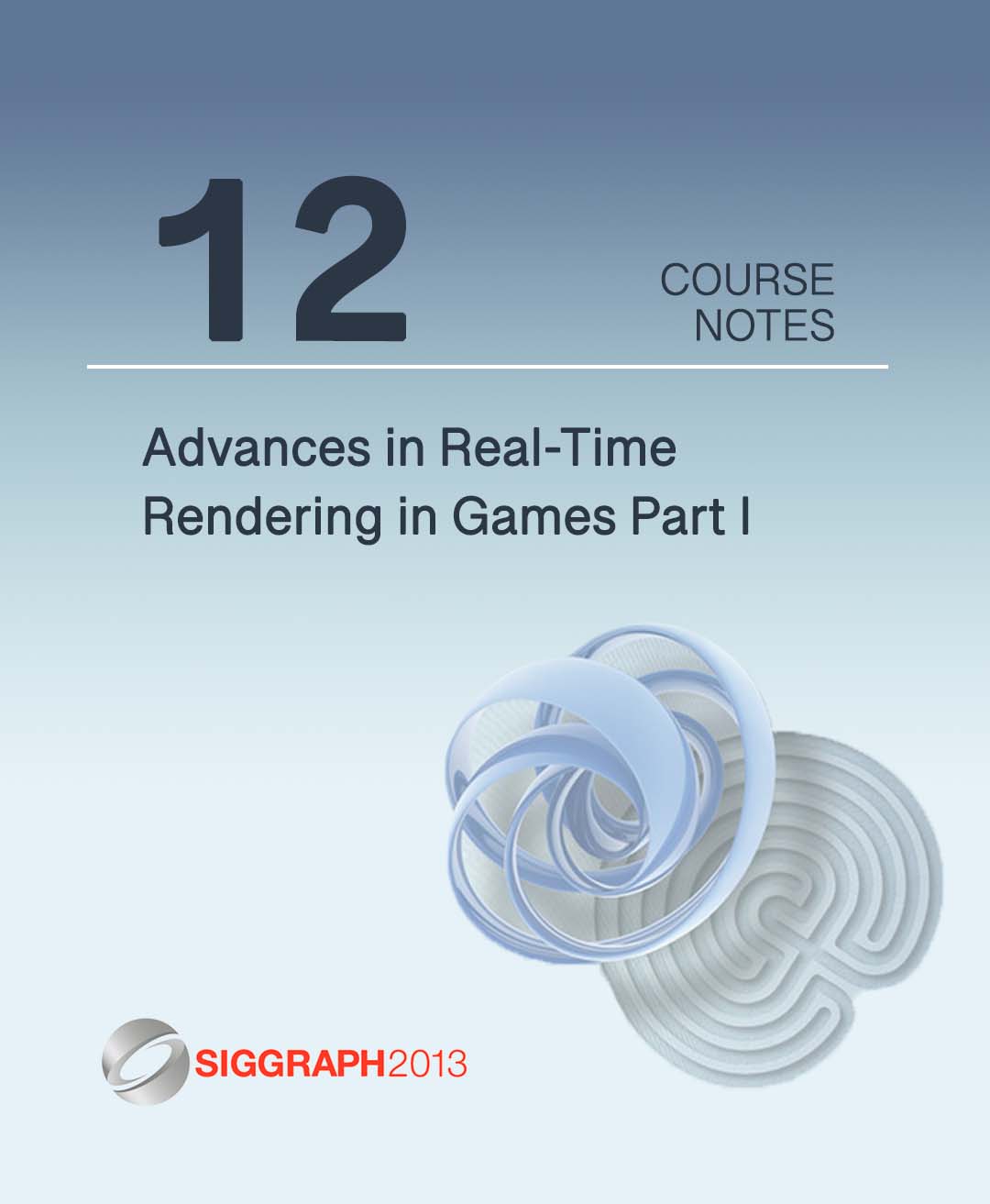“Advances in Real-Time Rendering in Games Part I” by Tatarchuk, Salvi, Persson and Olsson
Conference:
Type(s):
Title:
- Advances in Real-Time Rendering in Games Part I
Presenter(s)/Author(s):
Entry Number: 12
Abstract:
Prerequisites
Working knowledge of modern real-time graphics APIs like OpenGL or Direct3D and a solid basis in commonly used graphics algorithms. Familiarity with the concepts of programmable shading and shading languages.
Intended Audience
Technical practitioners and developers of graphics engines for visualization, games, or effects rendering who are interested in interactive rendering.
Description
Advances in real-time graphics research and the ever-increasing power of mainstream GPUs and consoles continue to generate an explosion of innovative algorithms suitable for fast, interactive rendering of complex and engaging virtual worlds. Every year, the latest video games employ a vast variety of sophisticated algorithms to produce ground-breaking 3D rendering that pushes the visual boundaries and interactive experience of rich environments.
Mythic Science Fiction in Real Time: Destiny Rendering Engine This section presents the driving concepts and design principles for the upcoming AAA title Destiny and describes the new engine developed to bring this game to life, focusing on several key technologies that have helped shape the visuals for the game. It concludes with a summary of the research needs for future game titles, with a focus on relevant technologies and practical pipelines.
Pixel Synchronization: Solving Old Graphics Problems With New Data Structures This section introduces a new synchronization primitive for pixel shaders that enables a whole new way of attacking graphics problems on the GPU. The new method is easy to use, requires a fixed amount of memory, and provides stable and consistent performance. Several applications are detailed and demonstrated in real-time, including programmable blending, single-pass depth peeling, order-independent transparency, and deep shadow maps.
Practical Clustered Deferred and Forward Shading Efficient and flexible lighting remains a challenge in modern game engines. Clustered Shading [Olsson et. al. 2012] is a new lighting technique that offers compelling advantages over previous methods such as Tiled Deferred and Forward+. It scales better with complex scenes, while also offering more flexibility and fewer hassles. It is a unified lighting solution that works well with transparency, MSAA, and custom material and lighting models, without requiring extra passes or even necessarily a pre-z pass.
This session introduces the latest academic research on this technique, then reviews the adapted version of the technique that is currently in production at Avalanche Studios and the key differences between the implementations and their implications.





